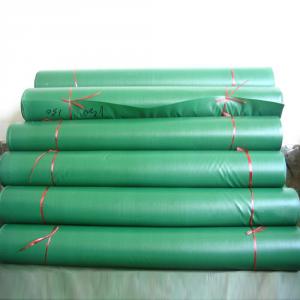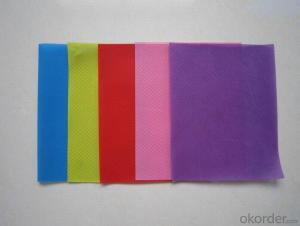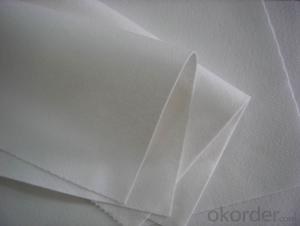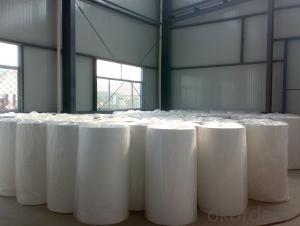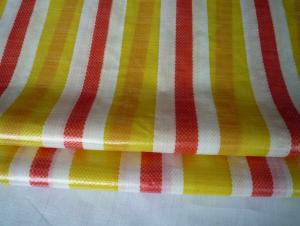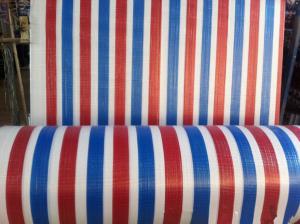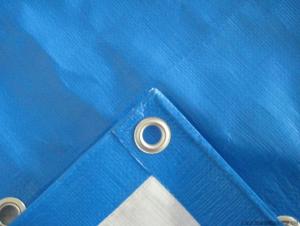WOVEN CLOTH
- Loading Port:
- China Main Port
- Payment Terms:
- TT OR LC
- Min Order Qty:
- -
- Supply Capability:
- -
OKorder Service Pledge
OKorder Financial Service
You Might Also Like
Each piece pack into plastic bag with customizable lable inserted, then proper pcs in a carton box packing or same color bale packing.
Material: | Virgin raw material (HDPE & LDPE), Natural Leno Weave PE Fabric, 3x3/Sq. Inch Mesh | |||||
Character: | UV Treatment, water-proof, mildew-proof, tear-resistant, FR Treatment available upon request | |||||
Specification: |
|
|
|
|
| |
Weight: | 50gsm-300gsm |
|
|
|
|
|
Colour: | Transparent color with natural weaving, green, blue, yellow... | |||||
Size: | 2.1x10m, 2.6x10m, 3.1x10m, 3.6x10m, 2.6x20m, 3.1x20m4x5m, 2x50m,2x100m,. Any size is available | |||||
Workmanship: |
|
|
|
|
| |
Fabrics reinforced by PP rope in hem on all ground edges, aluminum eyelets(plastic eyelets) every 1 meter or 3 feet interval (or as per your request).Special corner patch is available. | ||||||
| |
- Q: How to reduce the cost of textile yarn dyeing
- Artificial: now wage increases, the insurance state to pay, can not save
- Q: Lin is what kind of textile
- 4, the common textile fiber textile properties: ① wool: moisture, elasticity, performance are good, intolerant insects, acid and metal combined with dyes. ② silk: moisture, breathable, shiny and good performance, suitable for acidic and direct dyes
- Q: Are hats a class of textile and apparel products?
- Hats are popular for textile products, processing or general trade.
- Q: Textile and garment industry, including a complete industrial chain which
- The first human clothes are made of animal skins, wrapped in the body of the earliest "fabric" with linen fiber and grass made.
- Q: What is the step in the textile fabric
- As much as possible to understand the production and operation of the processing plant, and the factory's excellent / inferior to fully assess, so that know the root.
- Q: The international market of textile industry
- Basic necessities of life, the market will be folded but will never disappear, low-cost low-priced products will still have to win the opportunity to order, textile enterprises must appear the survival of the fittest fierce competition and reshuffle. Although facing difficulties, but the fundamentals of China's textile industry has not changed. International and domestic competitive advantage still exists. First of all, to create profits accounted for 98% of the industry profits of 1/3 of the textile and garment enterprises in the development of good momentum.
- Q: What are the raw materials for textiles?
- To this many of the textile area to the categories are: fabric, knitwear, yarn rope, towel blanket Pa, non-woven fabrics and special textiles. Fabrics according to their use of raw materials to distinguish, there are: cotton, silk, woolen cloth, linen and so on. Knitwear with sweatshirts, pullovers, gloves, socks, camel hair and so on.
- Q: Do you need to do environmental protection for dry textile processing?
- Family business is to all the property owned by the family, personal business is funded by the individual property.
- Q: What is the use of polyurethane TPU hot melt adhesives in textiles?
- Carpet rubber adhesive with the basic material for the ethylene and other olefinic monomer copolymer, such as ethylene - vinyl acetate copolymer, ethylene acrylate copolymer. The vast majority of cases are the use of ethylene. Vinyl acetate copolymer (EvA).
- Q: What kind of textile is China's export to the United States?
- In 2006, I exported US $ 7.6 billion (17% of all US exports), $ 5.8 billion (36%) of knitted garments, $ 2.7 billion for home textiles, Dollar (17%).
Send your message to us
WOVEN CLOTH
- Loading Port:
- China Main Port
- Payment Terms:
- TT OR LC
- Min Order Qty:
- -
- Supply Capability:
- -
OKorder Service Pledge
OKorder Financial Service
Similar products
Hot products
Hot Searches
Related keywords







